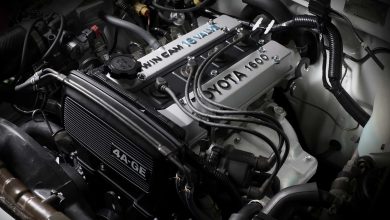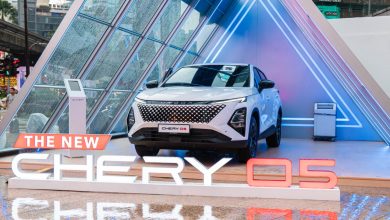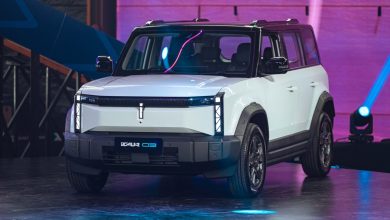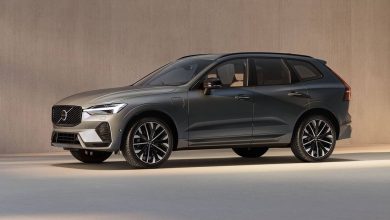Audi A3 Sportback 40 TFSI e PHEV Has 78 km Of EV Range
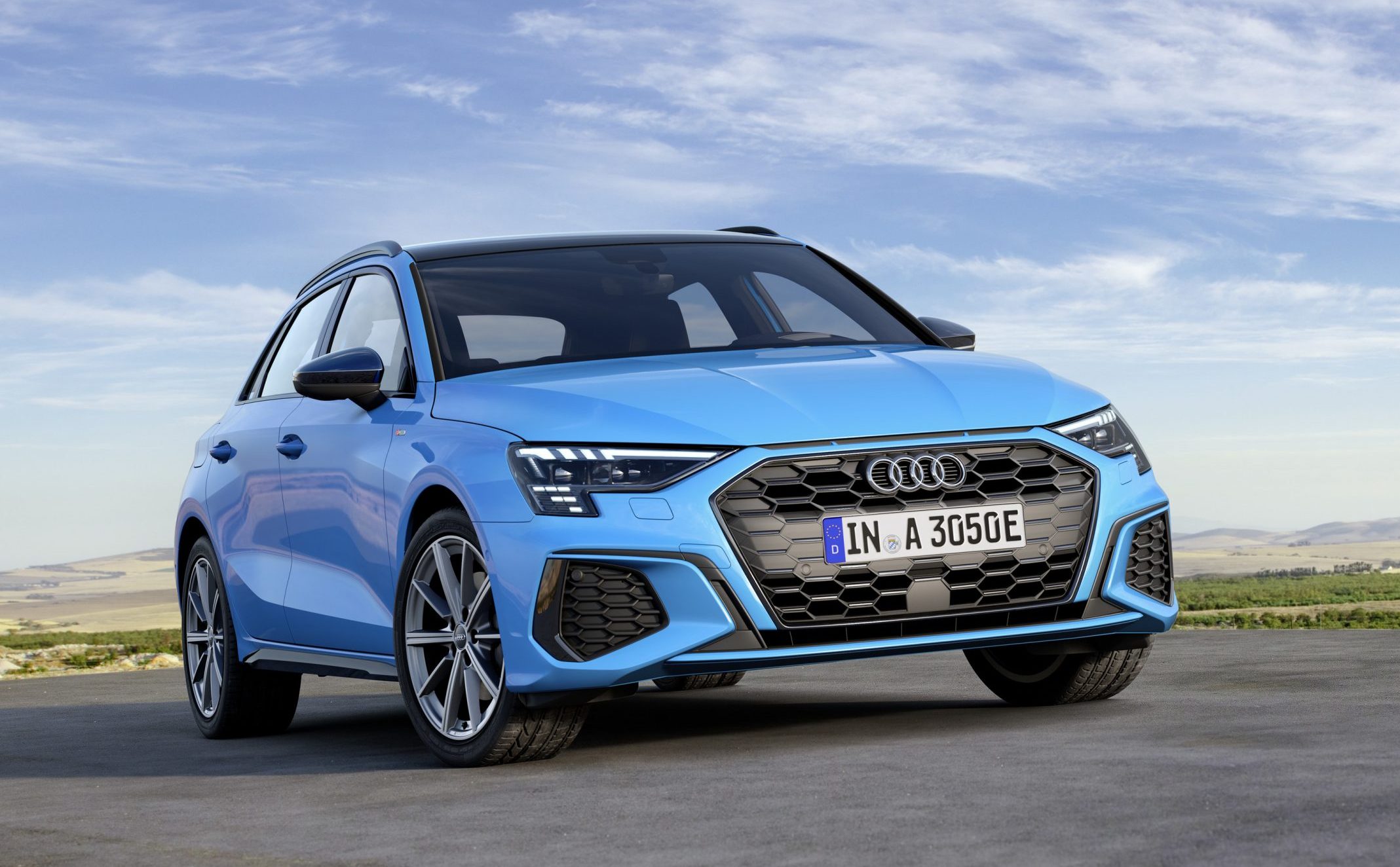
This compact Audi hatch is a lean, green but rather expensive machine.
Much like the larger Volkswagen Audi Group, it would appear that Audi is continuing its charge on electrifying its range as Audi has just quietly revealed to the world its latest variant of its compact hatchback, the A3 Sportback 40 TFSI e. Ridiculous name aside, this is set to be Audi’s latest and smallest electrified vehicle within its lineup.
A successor to the reasonably popular Audi A3 Sportback e-tron, the big claim from Audi for this second generation A3 is that this latest PHEV variant is ‘locally emissions-free, offers sporty driving performance with high efficiency, and features all the strengths of the new A3 product line.’ Thus to back each individual claim up, the Ingolstadt automaker has implemented some pretty innovative ideas within the body of this tiny hatchback.

Starting with the powertrain, the Audi A3 Sportback 40 TFSI e features a traditional 1.4 TFSI turbocharged four-cylinder that drives the front wheels through a six-speed S-tronic dual-clutch transmission. Like with its e-tron predecessor though, integrated within the housing of the gearbox is an electric motor that provides the electric drive.
Compared to the unit found in the previous iteration e-tron, this new electric drive unit is lighter, more compact yet more power dense than its predecessor. What more is that it is powered by an even larger 13 kWh lithium-ion battery pack located underneath the rear seats of the hatchback. Thus allowing this PHEV variant of the A3 not only run on pure electric drive for up to a NEDC claimed range of 78 km, but also only emit between 30 to 34 g/km of CO2 and achieve a claimed fuel economy figure of between 1.4 and 1.4 litres per 100 km. Handily fulfilling Audi’s claim of the A3 being ‘locally emissions free’.
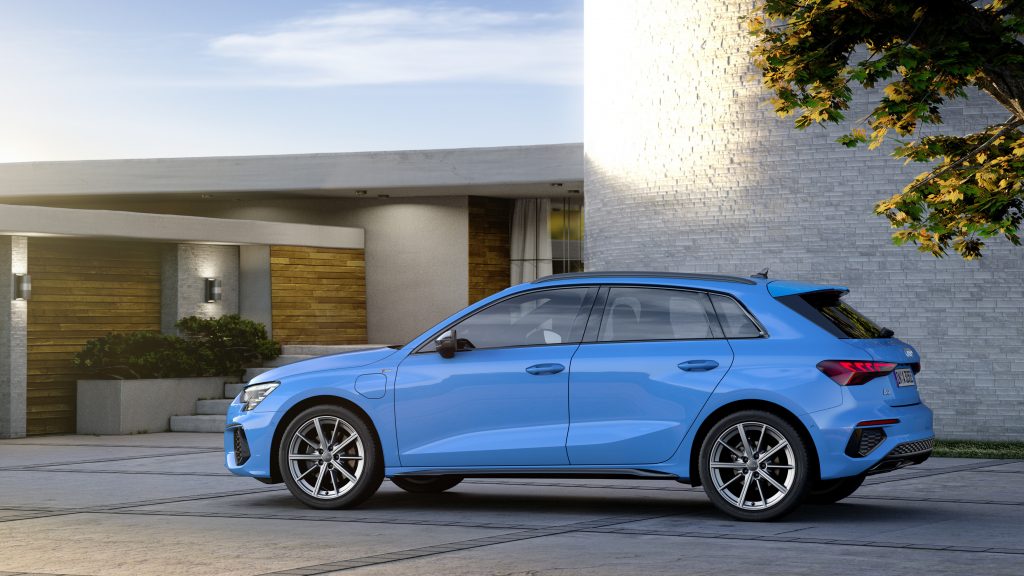
However, Audi also claims to offer a ‘sporty driving performance with high efficiency’ with this new A3 PHEV. For the first bit of the statement, a combined power output of 150 kW and 350 Nm of torque equates to a reasonably sporty 0 to 100 km/h time of 7.6 seconds and a reasonably high 227 km/h top speed.
Put the gearbox in S mode however, and Audi claims that the hybrid drive will show its full sporty potential by releasing a full boost of torque for up to 10 seconds upon kick down. In any case, a four-link rear suspension found that features on any variant of the A3, including in this PHEV trim, should mean that this hatchback should be a reasonably sporty handling car round the twists.
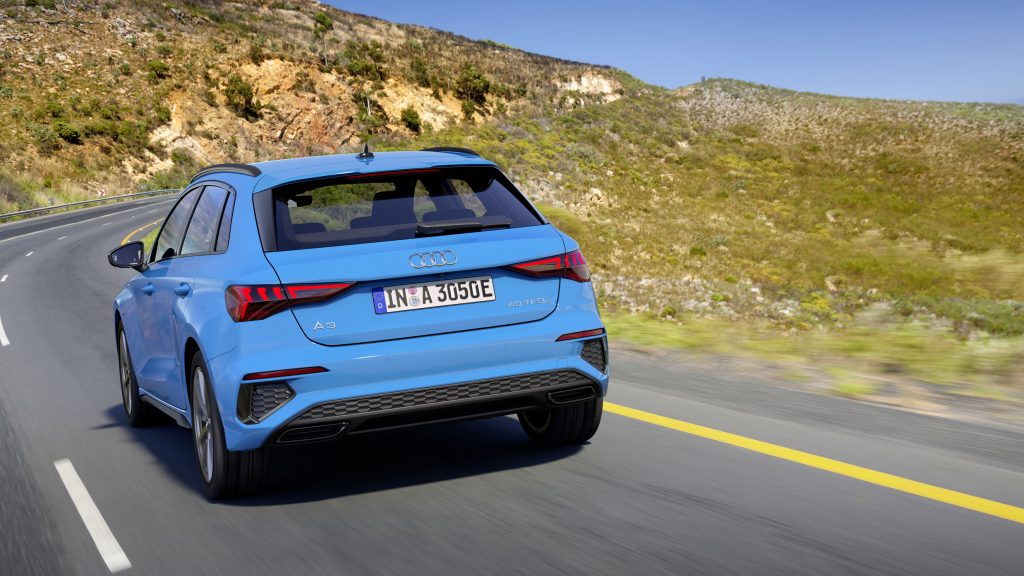
In regards to the latter ‘…with high efficiency’ part of that statement, the Audi A3 Sportback 40 TFSI e features the prerequisite EV one-pedal driving with regenerative braking force of up to 0.3 g and can recuperate up to 40 kW of electrical energy. Furthermore, this PHEV Audi always starts up electrically in conditions as cold as -28 ºC, while also featuring a ‘battery hold’ and ‘battery charge’ mode that can be selected manually by the driver within the MMI infotainment system or intelligently managed by the car’s sophisticated electronics.
On the subject of the PHEV batteries, a full recharge will take up to four hours as the Audi only charges with a maximum power of 2.9 kW. That said, the free myAudi app and the numerous Audi e-tron charging stations across Europe should make it more convenient to slowly top up the juice on those tiny batteries. The app also allows drivers to ‘control the charging times and pre-entry climate control remotely’.
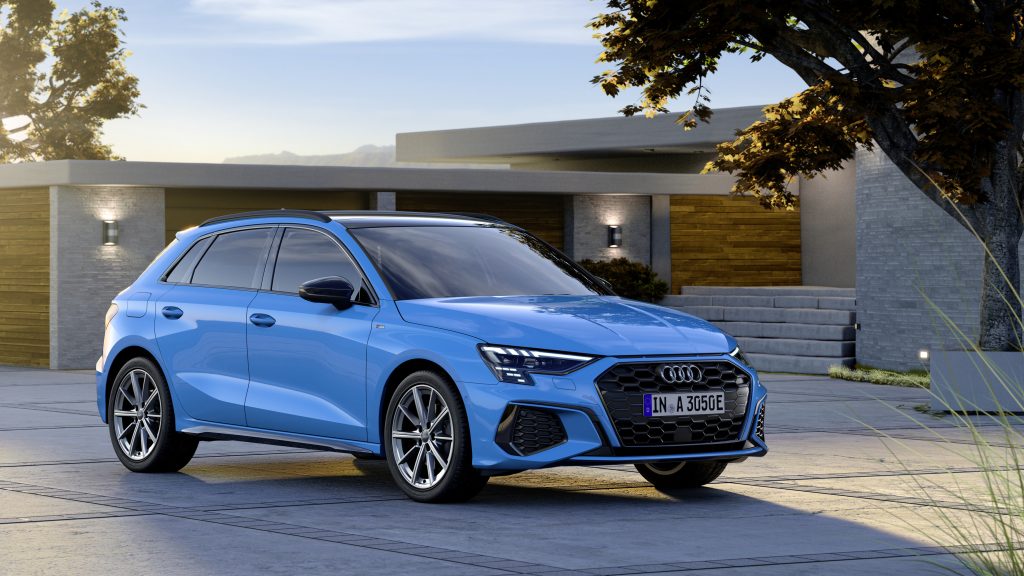
As for the statement of the PHEV A3 ‘features all the strengths of the new A3 product line’, the A3 Sportback 40 TFSI e features the usual long list of Audi standard equipment. It also however features the usual equally long list of optional extras. The updated 10.1 inch MMI central infotainment display is standard, but the virtual cockpit is on the options list. 16 inch specially designed alloy wheels feature on this PHEV A3, but there are larger wheels on offer for those who tick the right boxes. Handily, a suite of Audi active safety systems are standard, including its Car-to-X online service. However, the fancy matrix LED lights and adaptive cruise control is left to the options menu.
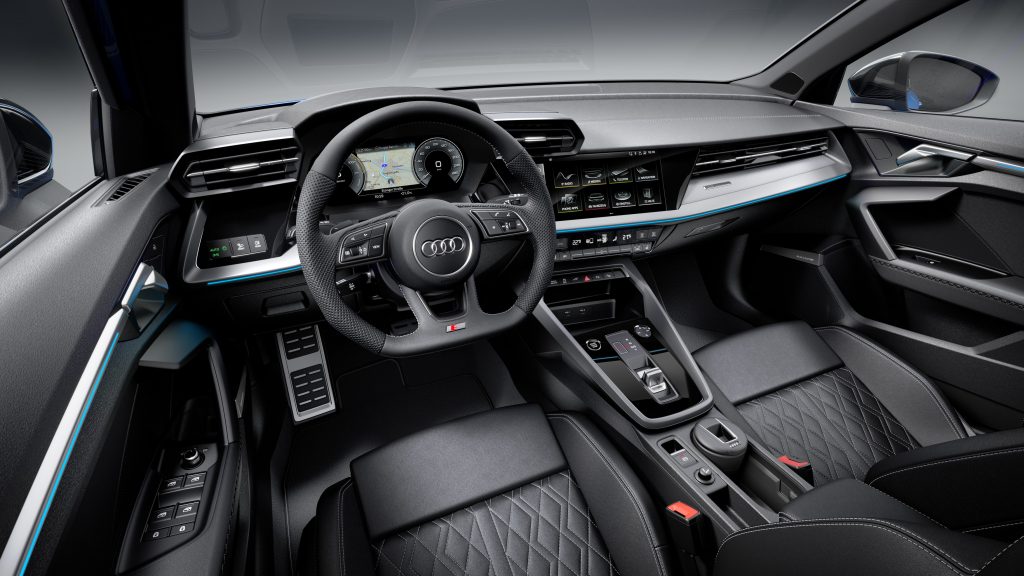
Going on sale in many European markets in the Fall of 2020, the Audi with too long a name will cost from EUR 37,470.92 (RM 183,000). It might sound like a lot for a hatchback, and frankly it is. German buyers however are entitled to a EUR 6,750 (RM 32,900) tax incentive, thus bringing the cost down of the A3 Sportback 40 TFSI e to just EUR 30,720.92 (RM 150,000).
Having said that though, Audi has also recently announced a natural gas powered A3 that has roughly the same power and green credentials for about the same price. So Audi A3 buyers out there will have the dilemma of choosing between these two lean, green but quite expensive machines.
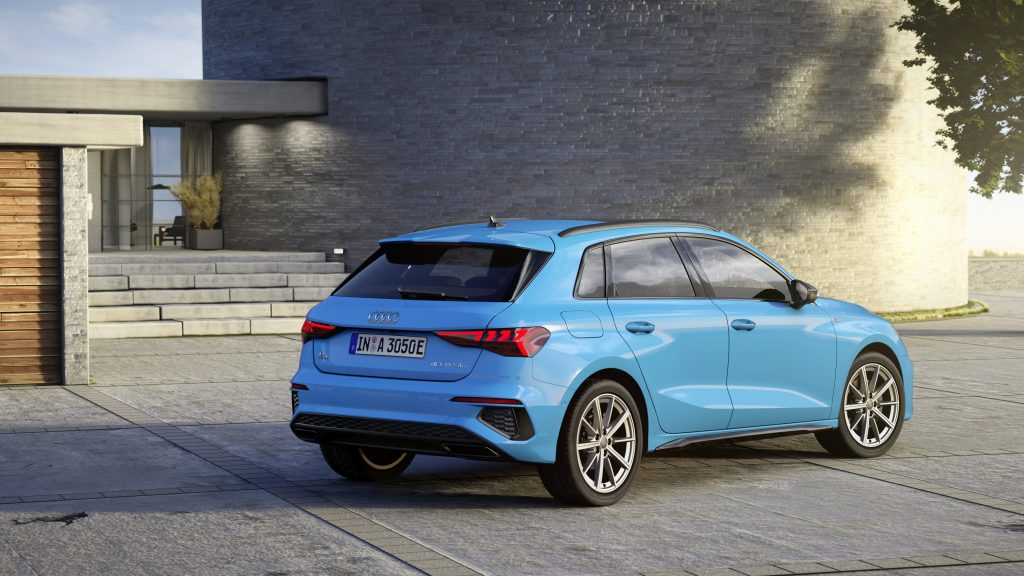
PRESS RELEASE: Up to 78 kilometers (48.5 mi) of electric range (NEDC) and 150 kW (204 PS) of system output: Audi presents the A3 Sportback 40 TFSI e. The compact plug-in hybrid is locally emissions-free, offers sporty driving performance with high efficiency, and features all the strengths of the new A3 product line. Sales in Germany begin in fall 2020 at a base price of EUR 37,470.92. Customers can claim a total of EUR 6,750 in incentives.
With the A3 Sportback 40 TFSI e, Audi is continuing its electrification offensive. The plug-in hybrid models from the A6, A7, A8, Q5, and Q7 product lines have already been introduced on the markets. Now, the compact models are following suit. The Audi A3 Sportback 40 TFSI e, which took up the concept of its successful predecessor, the A3 Sportback e-tron, and further optimized it, will kick things off. A more powerful variant that emphasizes the sporty accents will follow shortly after.
TFSI engine plus electric motor: drive, power transmission, and battery
A 1.4 TFSI serves as the combustion engine for the compact plug-in hybrid model. The four-cylinder gasoline engine outputs 110 kW (150 PS) and delivers more than 250 Nm (184.4 lb-ft) of torque in the range between 1,550 and 3,500 rpm. The electric drive is powered by a permanently excited synchronous machine with an increased power density as compared to its predecessor. It produces 80 kW and 330 Nm (243.4 lb-ft) of torque. As with the predecessor, it is integrated in the housing of the six-speed S tronic. However, it is even lighter and more compact.
Together, the 1.4 TFSI and the electric motor deliver a system output of 150 kW (204 PS). When working together with maximum boost, the system torque reaches 350 Nm (258.1 lb-ft). The compact plug-in hybrid model sprints from 0 to 100 km/h (62.1 mph) in 7.6 seconds on its way to a top speed of 227 km/h (141.1 mph). In the NEDC cycle, it consumes between 1.5 and 1.4 liters of fuel per 100 kilometers (156.8–168.0 US mpg), which corresponds to 34 to 30 grams of CO2 per kilometer (54.7–48.3 g/mi). A six-speed S tronic transfers the torques of the motor and engine to the front axle. The dual-clutch transmission is equipped with an electric oil pump that ensures gear changes and oil supply even when the TFSI is deactivated temporarily.
The lithium-ion battery is located below the vehicle underbody in the area of the rear sears of the A3 Sportback 40 TFSI e. Its 96 prismatic cells store 13.0 kWh of energy, almost 48 percent more than the predecessor model. No changes were made to the high-voltage battery in the package; the progress results from the improved cell chemistry. A separate cooling circuit controls the temperature of the battery. It can also be coupled with the air conditioning system, if necessary. This allows customers to drive on electric power even at higher outside temperatures.
Efficiency takes priority: drive management
The drive management of the compact plug-in hybrid is designed for efficient driving. It always starts electrically, up to a temperature of -28 °C. Drivers can prioritize electric drive with the EV button. It can cover up to 78 kilometers (48.5 mi) (according to the NEDC standard, 67 kilometers (41.6 mi) in the WLTP), that is the majority of everyday journeys, with zero local emissions. That is almost 20 kilometers (12.4 mi) more than the predecessor model. The fully electric top speed is 140 km/h (87.0 mph). At low speeds, the statutory e-sound of what is known as the Acoustic Vehicle Alert System is output.
When the A3 PHEV is in hybrid mode, the two drives divide the work intelligently. Two special modes can be selected via the MMI operating system: “Battery hold” and “Battery charge.” In “hold” mode, the available battery charge is held at the current level. In “charge” mode, as much electricity as possible is supplied to the battery.
The drive management of the Audi A3 Sportback 40 TFSI e uses a large volume of data that the navigation, sensors, and assist systems supply. In the interest of efficiency, it selects freewheeling with deactivated TFSI in most situations when decelerating, allowing the car to coast.
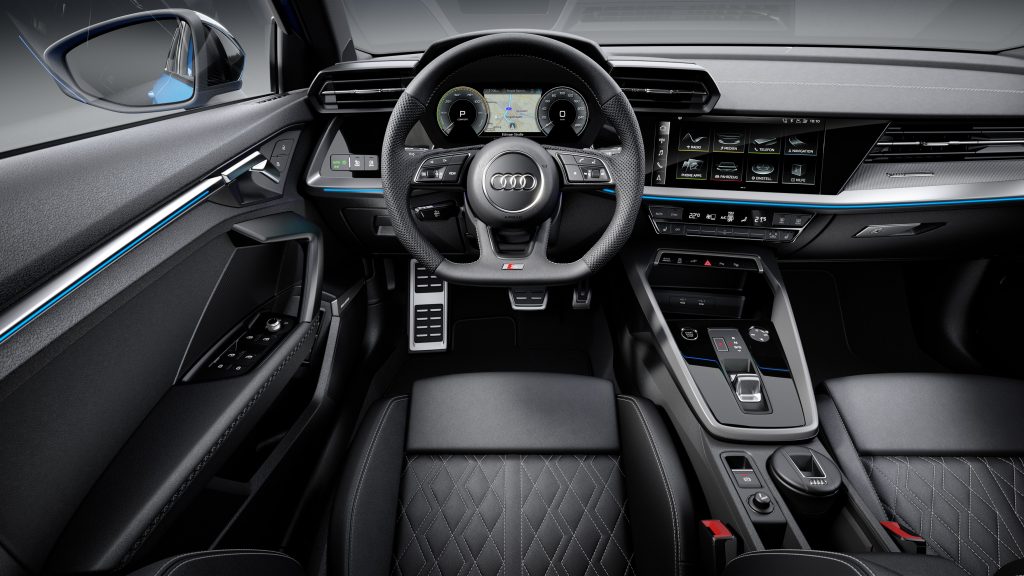
Dynamic profile and S gear: sporty hybrid experience
To influence the character of the drive, as well as other systems such as power steering and S tronic, drivers can also use the standard Audi drive select system. It offers the driving profiles comfort, auto, dynamic, and individual.
In the dynamic profile and when the S tronic is set to S gear, the hybrid drive shows off its sporty potential. When the driver puts the pedal to the metal via kickdown, it releases the full boost torque for up to ten seconds. As soon as they take their foot off the accelerator pedal, the electric motor switches to recuperation. The resulting deceleration creates a true one-pedal feeling.
While braking, the electric motor performs the deceleration alone up to around 0.3 g, thereby covering the vast majority of all brake applications in everyday customer driving. The hydraulic wheel brakes only come into play if the driver presses the pedal more forcefully. The transition is almost unnoticeable, and recuperation remains active. While braking, the electric motor can recover up to 40 kW of energy.
The suspension of the Audi A3 Sportback 40 TFSI e combines pleasant ride comfort and a good level of dynamism; the sophisticated four-link rear axle provides an excellent basis for this. The electric brake booster guarantees powerful and spontaneous braking. Specially designed 16-inch alloy wheels come as standard, and Audi delivers 17-inch or 18-inch wheels upon request.
Charging at home and on the road: a full charge from a conventional socket in just four hours
Audi delivers the compact plug-in hybrid with a 230-volt power charging cable for the garage as standard. The A3 Sportback 40 TFSI e charges with a maximum power of 2.9 kW. It takes slightly more than four hours to fully recharge a completely empty battery. With the free myAudi app, customers can control the charging times and pre-entry climate control remotely. When outside temperatures are low, electric heating elements warm up the interior, while the electrically powered air conditioning cools the interior down when outside temperatures are high. At public charging terminals, the car charges via what is known as a mode 3 cable. The e-tron Charging Service makes charging on the road particularly convenient. It covers most countries in Europe, and a single card offers access to roughly 150,000 charging points.
Typically Audi A3: driving pleasure and great everyday utility
The A3 Sportback 40 TFSI e is 4.34 meters (14.5 ft) long and offers great driving pleasure and everyday utility, as is typical for all models of the product line. Its exterior features a sporty and expressive design. Audi offers Matrix LED headlights upon request. Their digital daytime running lights, a pixel array consisting of 15 LED segments, generate an e-shaped light signature – the symbol of the plug-in hybrid drive.
The progressive design is continued in the interior with a compact shifter, striking door openers, and a large black panel surface in the instrument panel. Seat upholstery made of recycled PET bottles, on which stylish contrasting stitching sets accents, are a new addition to the range.
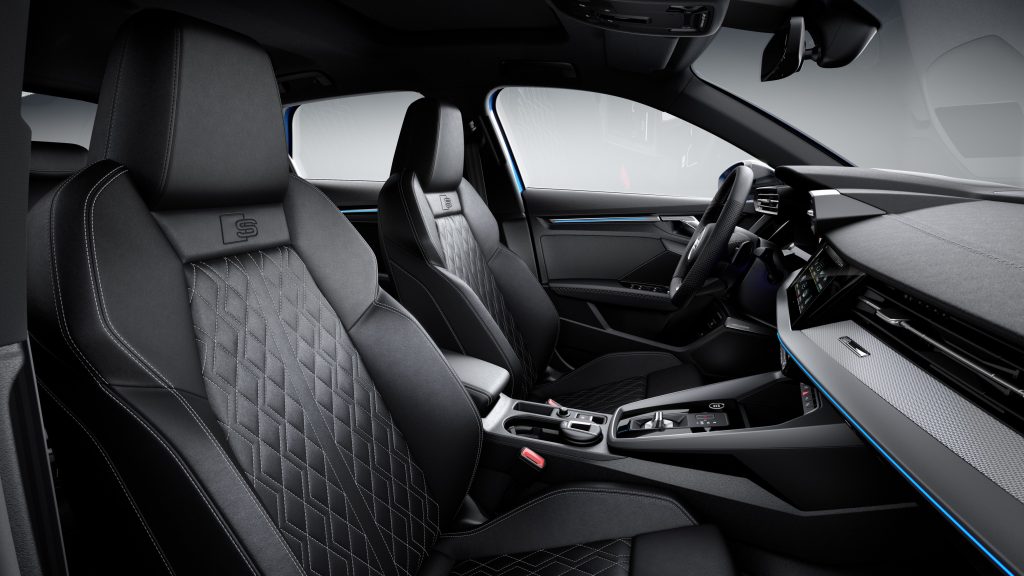
Depending on the position of the rear seat backs, the luggage compartment has a volume of 280 to 1,100 liters (9.9 to 38.8 cu ft). An electric tailgate that can be opened and closed easily with a foot motion is available upon request.
Hybrid-specific functions and displays have been added to the operating concept of the A3 Sportback 40 TFSI e. The powermeter in the digital instrument cluster – or in the optional Audi virtual cockpit – displays the system’s output, the status of the drive, the recuperation, the battery’s state of charge, and the range. The central 10.1-inch MMI display shows the energy flows.
Intelligent and versatile: connectivity and equipment
Like all new A3 models, the compact plug-in hybrid is equipped with the third-generation modular infotainment platform. Its computing power is ten times higher than that of its predecessor, it performs all tasks relating to connectivity with LTE Advanced speed, and it also has an integrated Wi-Fi hotspot. The MMI navigation plus offers flexible and intelligent route guidance with satellite images from Google Earth, predictions on the development of the traffic situation, and 3D models of many major European cities.
The Audi connect online services include the Car-to-X services that draw on the swarm intelligence of the Audi fleet. They output warnings regarding hazards and can find parking spots on the roadside in selected cities. The car is connected to the user’s smartphone via the myAudi app, Apple CarPlay, or Android Auto. The Audi phone box connects the vehicle’s antenna to the device and charges it inductively. The Audi connect key allows the user to lock and unlock the car and to start the engine via an Android smartphone.
There is an extensive range of standard equipment. Aside from the features mentioned above, it also includes LED headlights, a leather multifunction steering wheel, and a two-zone automatic air conditioning system. A head-up display, sport seats with integrated head restraints, and a panoramic glass sunroof are available upon request. The assist systems Audi pre sense front, lane departure warning, turn assist, and swerve assist are standard equipment. The adaptive cruise assist plays a main role among the optional systems, as it assists the driver in many situations while steering, accelerating, and braking.
The A3 Sportback 40 TFSI e will go on sale in many European markets in the fall of 2020. Its base price in Germany is EUR 37,470.92, and customers in Germany are entitled to incentives in the amount of EUR 6,750. As a company car, the plug-in hybrid model is taxed only at a flat rate of 0.5% of the gross list price.

